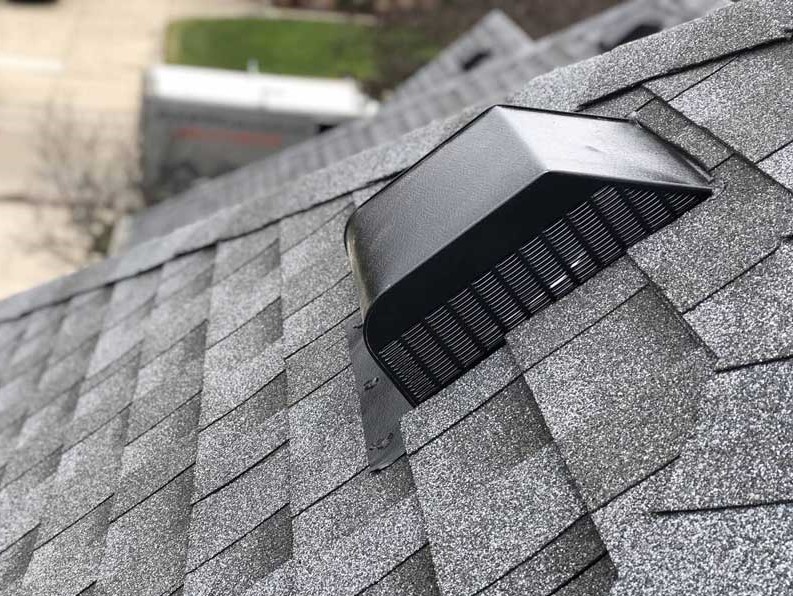When it comes to maintaining the long-term health of your roof, one of the most important considerations is ensuring proper ventilation. Ventilation helps regulate temperature levels in your attic or other enclosed spaces covered by a roof and reduces moisture buildup, which can cause significant damage over time. Many types of roof vents are available for specific needs, each offering unique benefits depending on where you live and what kind of structure you have. In this blog post, we’ll explore the various roof vent types, how they work, and why they’re essential for keeping your roofing system healthy for years.
Ridge Vents
Ridge vents are one of the most essential types of roof vents. They help maintain proper airflow in the attic by providing a channel for hot air to escape. Ridge vents are usually good enough to allow air escape, but they efficiently prevent elements like rainwater and pests from entering the attic.
Importance Of Ridge Vents
- Ridge vents help to improve the ventilation in an attic. They help regulate the temperature and humidity of the air in the attic. By so doing, they prevent the buildup of condensed air.
- Proper airflow in the attic can help prolong your shingles’ lifespan. When heat is evenly distributed on the roof, it reduces the possibility of shingle degradation.
Soffit Vents
Soffit vents are usually attached to the underside of the roof overhang. These vents are essential in maintaining proper ventilation because they help promote fresh outdoor airflow into the attic while expelling hot air.
Soffit vents range in different types. Some of the most common soffit vents include continuous soffit vents, individual vents, and perforated soffit panels.
Importance of Soffit Vents
- It helps to regulate the temperature and humidity in the attic.
- Since soffit vents keep a roof’s temperature consistent, they can help prevent your roof from collecting ice dams.
Gable Vents
Gable vents are another type of vents for setting up exhaust ventilation in attics. They are usually installed on the gable ends of the roof. This gable vent typically occupies the triangle-shaped portions on a roof.
Gable vents are essential for passing out hot, humid air from the attic. And like many other vent types, they help regulate temperature and humidity levels.
Importance of Gable Vents
- Gable vents can effectively provide attic exhaust ventilation without needing power or moving parts.
Turbine Vents
Turbine vents are also referred to as whirlybirds or roof turbines. These types of vents usually pull cool air into the attic using the power of the wind. In order to push out hot air from the attic, they use a turbine that rotates when the wind blows. When these rotating turbines work in motion, they help to promote air circulation in the vent. Turbine vents are usually installed directly on the roof’s surface and are always specifically built to utilize wind flow. This is achieved via their dome-shaped blades or fins that catch the wind for spinning the turbine.
Importance Of Turbine Vents
- Turbine vents do not need electricity to carry out their function. As a result, they are a cost-effective and environmentally-friendly option for ventilating attics.
- Turbine vents can easily push out hot air from the vent. Hence, they are great at regulating the temperature in the attic.
Static Vents
Static vents are also known as roof louvers or box vents. They are a good way to ventilate an attic passively. If you want to get the best out of static vents, installing them in combination with other types of vents is best. For instance, you can install static vents alongside ridge vents or soffit vents.
Importance Of Static Vents
- They are very simple to use and maintain.
- Since static vents do not have any moving parts, they do not need electricity to function. They naturally expel hot air from the attic and allow fresh air.
- Static vents also do not need mechanical maintenance of any kind.
Solar-Powered Vents
Solar-powered roof vents are the type of vents that use the sun’s energy to power attic fans. They help to make sure that the attic gets proper ventilation. Its process of operation is quite simple. Solar vents use solar panels to retain and store solar energy. The panels then transform the solar energy into electricity to power the fan.
Importance Of Solar-Powered Vents
- Since they use renewable solar energy, solar-powered vents are environmentally friendly and energy-efficient.
- Solar-powered vents don’t need much maintenance. They can adequately function by themselves since they can automatically turn on when the sun is shining and turn off when it is not.
Conclusion
Regular roof ventilation checks, and maintenance, where necessary, are essential in preserving the health of your home. It is important to ensure that you install the right size and type of vents for your roof design to ventilate hot air from your home adequately. Regular maintenance and repair are also key factors in maintaining a healthy roof. Investing in quality materials for all repairs ensures you get the maximum lifespan from your investment.
Roofpro has extensive experience installing, repairing, and inspecting various roof vents to help keep your home sealed and air-conditioned efficiently. We provide reliable services and materials at competitive prices while adhering to the highest quality assurance standards. So if you’re looking for effective solutions to roof ventilation or roofing-related issues, contact us at 250-248-3400 today!


